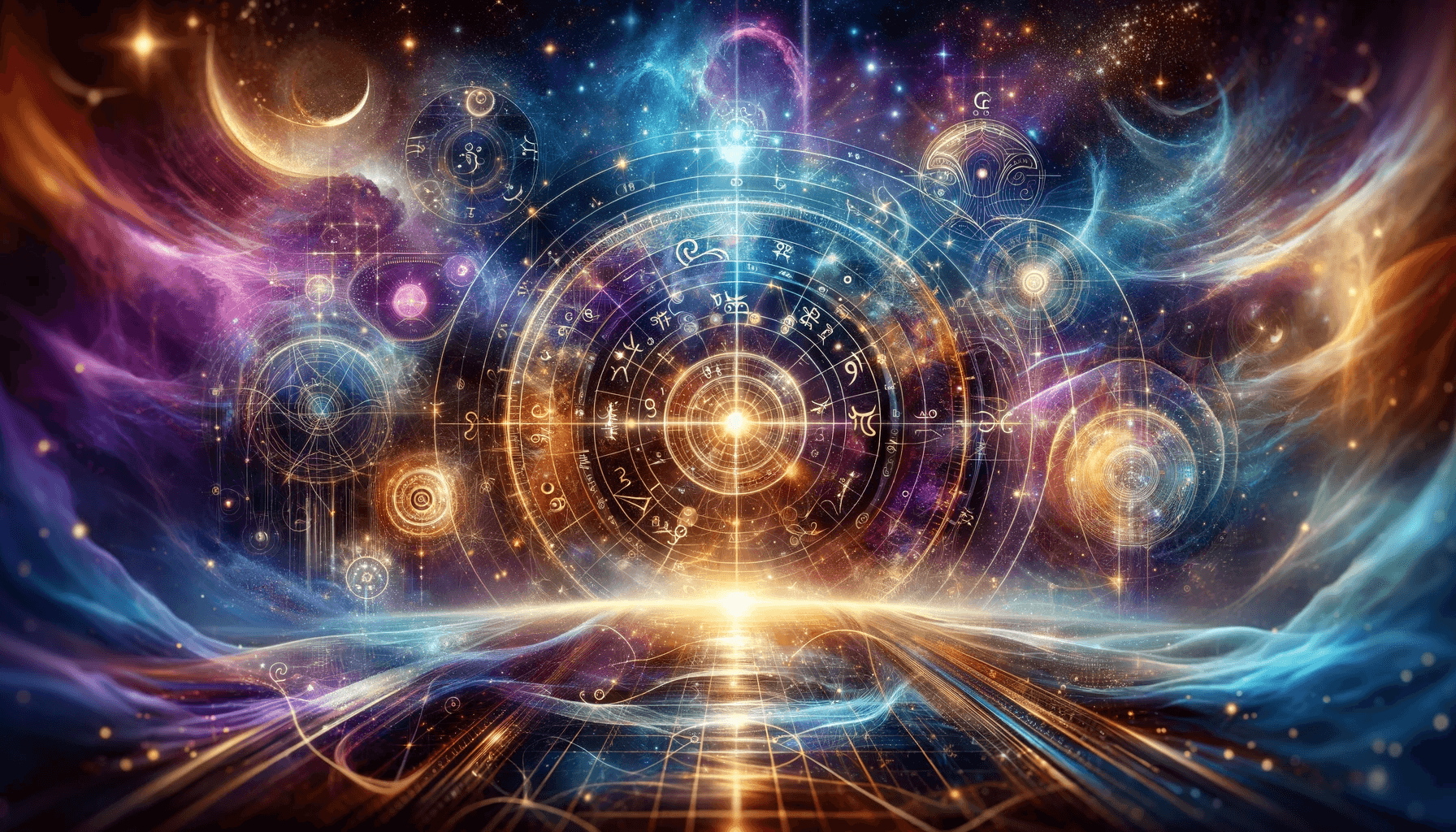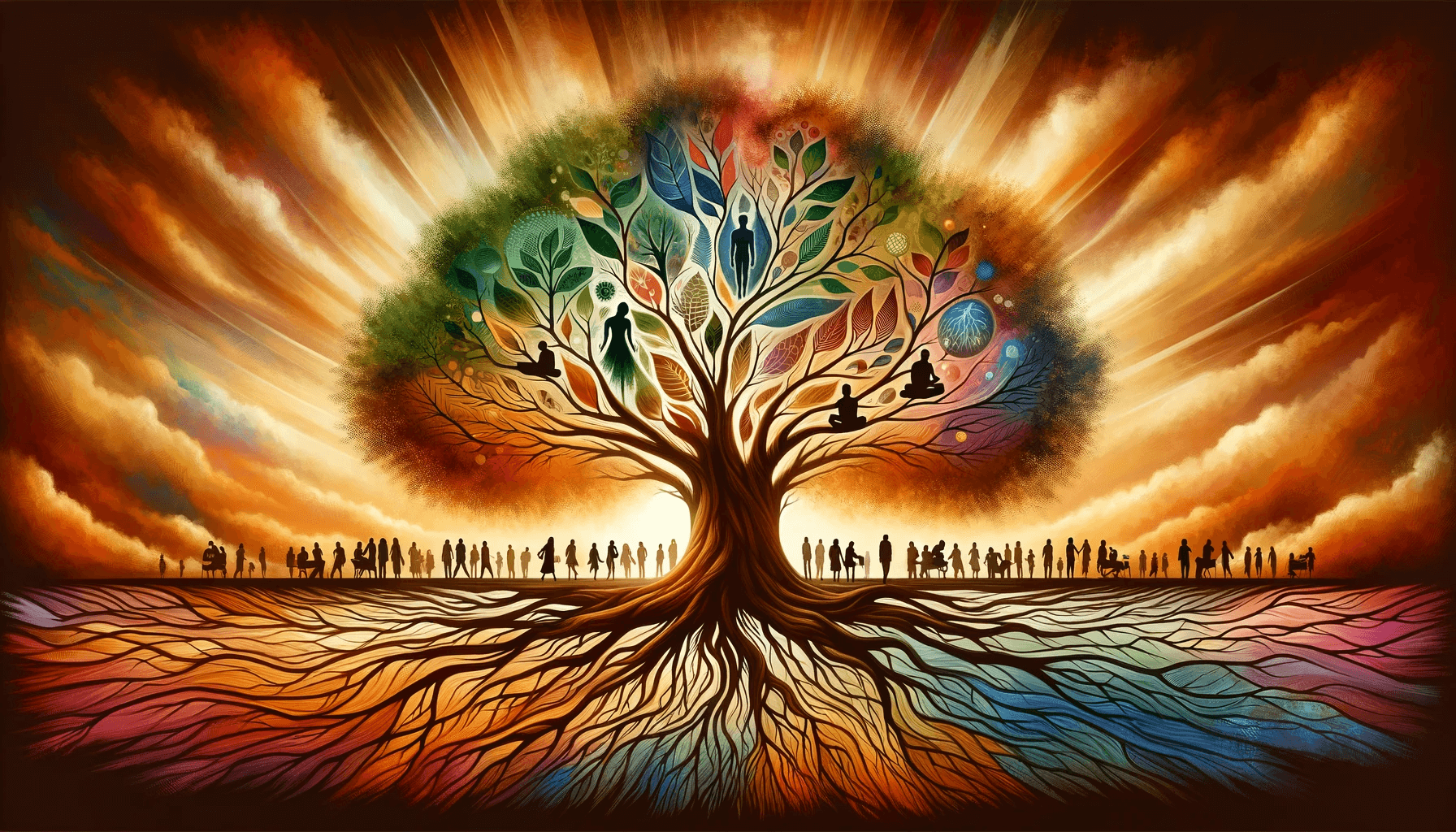Sponsor Cosmic Energy Bracelet
Table of Contents
Introduction to Vedic Astrology
Vedic Astrology, also known as Jyotish, is an ancient Indian system of astrology that has been practiced for thousands of years. It is based on the belief that the positions and movements of celestial bodies can provide valuable insights into human affairs and the course of one’s life. Vedic Astrology is deeply rooted in the ancient wisdom of the Vedas, the sacred texts of Hinduism.
Origins and History of Vedic Astrology
Vedic Astrology is an ancient Indian science that studies celestial bodies and their influence on human affairs and the natural world. Its origins can be traced back thousands of years to the Vedic period in India.
- Historical Roots: Vedic Astrology’s roots are deeply embedded in the Vedas, the oldest scriptures of Hinduism, composed around 1500-1000 BCE. These texts contain references to planetary movements and their influences.
- Sage Parashara’s Influence: The foundational text for Vedic Astrology is believed to be the “Brihat Parashara Hora Shastra,” written by Sage Parashara. He is often considered the “father of Vedic Astrology.” This text lays down the basic principles of Indian astrology.
- Philosophical and Religious Integration: Vedic Astrology is closely tied to Hindu philosophical and religious concepts, such as Karma (the law of cause and effect), dharma (duty/righteousness), and moksha (liberation).
- Astrological System: Unlike Western astrology, which is based on the Solar system, Vedic Astrology is primarily based on the lunar system. It uses the sidereal zodiac, which aligns with 27 constellations (Nakshatras) and the movement of the Moon.
- Evolution and Texts: Over centuries, various texts and scholarly works have contributed to the evolution of Vedic Astrology, including the works of Varahamihira in the 6th century and later scholars in the medieval period.
- Modern Context: Vedic Astrology remains popular in India and has gained recognition globally. It’s used for various purposes like determining auspicious dates, making life predictions, and understanding one’s strengths and weaknesses.
In essence, Vedic Astrology is a predictive tool and a way to understand the deeper aspects of life and the universe from the Hindu philosophical perspective.
Understanding the basic principles of Vedic Astrology
Vedic Astrology believes that the cosmos is interconnected and that everything in the universe is linked. The basic principles of Vedic Astrology revolve around the concept of Karma, or the law of cause and effect. According to Vedic Astrology, our actions in past lives determine the circumstances and events of our present life.
Understanding the basic principles of Vedic Astrology involves delving into its unique elements and concepts, which are distinct from Western astrology. Here’s an overview of these fundamental principles:
- Sidereal Zodiac: Vedic astrology uses the sidereal zodiac, based on the fixed positions of constellations in the sky, unlike the tropical zodiac used in Western astrology, which is aligned with the Earth’s seasons. This results in a difference of about 24 degrees between the two zodiacs.
- Nakshatras (Lunar Mansions): A crucial element of Vedic astrology is the Nakshatras or lunar mansions. There are 27 Nakshatras, each covering 13 degrees and 20 minutes of the zodiac. These Nakshatras add depth to interpreting the Moon’s position in the chart.
- Rashis (Zodiac Signs): The zodiac in Vedic astrology is divided into 12 Rashis or signs, similar to Western astrology but with different dates due to the sidereal system. Each Rashi is associated with specific characteristics and temperaments.
- Planets (Grahas): Vedic astrology recognizes nine Grahas (planets), which include the seven visible planets, plus Rahu and Ketu, the north and south nodes of the Moon, respectively. Each planet symbolizes specific energies and aspects of life.
- Houses (Bhavas): The birth chart in Vedic astrology is divided into 12 houses, each representing different areas of life, such as personality, wealth, communication, relationships, career, etc. The placement of planets in these houses influences various aspects of life.
- Dasha System: One of the unique features of Vedic astrology is the use of the Dasha system. This predictive tool shows which planet’s influence will be predominant at different times in a person’s life. It’s used to predict major life events.
- Aspects (Drishti): Planets in Vedic astrology have specific aspects, or Drishti, which is the ability of a planet to influence or impact other planets or houses from its position in the birth chart.
- Divisional Charts (Vargas): Apart from the main birth chart, Vedic astrology uses various divisional charts to analyze different areas of life. For example, the Navamsa chart is used for marriage and relationships.
- Yogas: Yogas are special combinations of planets in a chart that produce specific results and significantly influence a person’s life. There are hundreds of Yogas, each with its unique implications.
- Karmic Influence: Vedic astrology emphasizes the concept of Karma, suggesting that a person’s birth chart represents their past life karmas, and the planetary positions indicate karmic lessons to be learned.
The birth chart, the horoscope, is the primary tool used in Vedic Astrology. It maps the heavens at the moment of a person’s birth and provides a snapshot of the cosmic energies present. The birth chart is divided into twelve houses, each representing different aspects of one’s life, such as career, relationships, and health.
What’s the differences between Vedic Astrology and Western Astrology
While sharing some similarities, Vedic Astrology and Western Astrology have key differences in their approach, methodologies, and underlying philosophies. Here are the main distinctions:
- Zodiac System:
- Vedic Astrology uses the sidereal zodiac, aligned with the fixed star constellations. This system accounts for the precession of the equinoxes, resulting in a zodiac approximately 24 degrees behind the tropical zodiac.
- Western Astrology uses the tropical zodiac, based on the Earth’s orientation to the Sun. It aligns its signs with the seasons, starting with Aries at the vernal equinox.
- Planetary Bodies:
- Vedic Astrology includes the traditional seven planets and the lunar nodes Rahu (North Node) and Ketu (South Node), which are considered shadow planets.
- Western Astrology includes the Sun, Moon, Mercury, Venus, Mars, Jupiter, and Saturn, and also incorporates Uranus, Neptune, and Pluto, which are not traditionally used in Vedic astrology.
- Houses:
- Vedic Astrology uses the whole sign house system where each house corresponds to one whole zodiac sign.
- Western Astrology often uses the Placidus system (among others), where houses can span parts of two different signs.
- Dasha System:
- Vedic Astrology employs the Dasha system, a unique method of timing that predicts significant life events based on the position of the Moon at birth.
- Western Astrology does not use the Dasha system but relies on transits, progressions, and solar return charts for predictive work.
- Aspects:
- Vedic Astrology primarily considers aspects based on sign placement, with specific “drishti” or aspects defined for each planet.
- Western Astrology focuses more on the angular relationship between planets (like trines, squares, oppositions).
- Philosophical and Cultural Background:
- Vedic Astrology is deeply intertwined with Hindu philosophy and the concepts of Karma and reincarnation.
- Western Astrology is more influenced by Hellenistic, Roman, and later on, psychological and modern esoteric traditions.
- Purpose and Use:
- Vedic Astrology is often used for practical guidance in daily living, including marriage matching, auspicious event timing, and life predictions.
- Western Astrology often focuses on psychological, personality, and self-development aspects.
Understanding these differences is crucial in appreciating how each system provides its unique perspective on astrological interpretation and life guidance.
The importance of birth charts in Vedic Astrology
In Vedic Astrology, the birth chart, also known as Janma Kundali or Natal Chart, holds immense importance as it is considered a cosmic map of an individual’s life. This chart is a snapshot of the heavens at the exact moment of a person’s birth, and it is believed to reveal significant information about various aspects of their life. Here’s why the birth chart is so crucial in Vedic Astrology:
- Blueprint of Life: The birth chart is an individual’s life blueprint. It’s believed to contain the karmic influences, strengths, weaknesses, opportunities, and challenges the person might face.
- Planetary Positions and Their Effects: The chart shows the positions of planets in various zodiac signs and houses at the time of birth. Each planet and house represents specific aspects of life, and their placements give insights into those areas, such as career, relationships, health, etc.
- Dasha Predictions: Vedic Astrology uses the Dasha system, a unique method of predicting significant life events based on the Moon’s position in the birth chart. The birth chart is essential to calculate these periods and understand their influence on the individual.
- Understanding Self: The birth chart helps understand one’s personality, traits, tendencies, and life patterns. It can offer insights into a person’s behavior, motivations, and potential life path.
- Karmic Insights and Spiritual Growth: Vedic Astrology is deeply rooted in Karma. The birth chart is often interpreted as a map of one’s past karmas influencing the present life. Understanding this can guide individuals toward spiritual growth and karmic resolution.
- Guidance for Life Decisions: Astrologers use the birth chart to guide various life decisions like career choices, marriage, business ventures, and other significant life events.
- Remedial Measures: The chart can reveal planetary afflictions or doshas (flaws). Vedic Astrology suggests remedies like mantras, gemstones, rituals, or charitable acts to mitigate negative influences.
- Timing of Events: The chart is crucial for determining the auspicious timing for various life events and undertakings, a practice known as Muhurta.
- Compatibility Analysis: In matrimonial matching, birth charts of potential partners are compared to assess compatibility, a practice known as Kundali matching or Guna Milan.
- Health Insights: The birth chart can also indicate health challenges and potential physical ailments, guiding an individual toward preventive health measures.
In essence, the birth chart in Vedic Astrology is not just a tool for prediction but also a profound and complex representation of a person’s life journey, offering insights and guidance at various stages of life.
Exploring the nine planets in Vedic Astrology
In Vedic Astrology, the nine planets, or “Navagrahas,” play a central role in interpreting a birth chart. Each planet represents specific energies, aspects of life, and personal characteristics. Here’s an overview of these nine planets:
- Sun (Surya):
- Represents: Soul, ego, self-esteem, father, authority.
- Significance: The Sun is considered the king of the celestial cabinet and symbolizes one’s core identity and consciousness.
- Moon (Chandra):
- Represents: Mind, emotions, mother, public life.
- Significance: The Moon is crucial for determining an individual’s mental and emotional makeup. It’s also significant in the calculation of the Dasha system.
- Mars (Mangala):
- Represents: Energy, courage, brothers, land, and property.
- Significance: Mars is associated with strength, assertiveness, and overcoming challenges. It also indicates technical and mechanical skills.
- Mercury (Budha):
- Represents: Communication, intellect, education, trade.
- Significance: Mercury influences cognitive abilities, analytical skills, and how one processes and communicates information.
- Jupiter (Guru):
- Represents: Wisdom, knowledge, wealth, children, teachers.
- Significance: Jupiter is known as the “guru” or teacher. It symbolizes expansion, growth, prosperity, and good fortune.
- Venus (Shukra):
- Represents: Love, beauty, art, luxuries, marriage, and relationships.
- Significance: Venus influences all aspects of life’s pleasure, romance, and harmony. It also relates to artistic talents.
- Saturn (Shani):
- Represents: Discipline, responsibility, long-term challenges, longevity.
- Significance: Saturn is often viewed as a strict teacher. It’s associated with life lessons, hard work, and the rewards of perseverance.
- Rahu (North Node of the Moon):
- Represents: Ambition, desire, sudden changes, foreign things.
- Significance: Rahu is a shadow planet known for causing upheavals and radical transformations.
- Ketu (South Node of the Moon):
- Represents: Spirituality, detachment, loss, and liberation.
- Significance: Ketu, another shadow planet, is often associated with spiritual growth, enlightenment, and the letting go of worldly attachments.
Each planet governs specific aspects of life and can have benefic (positive) or malefic (negative) influences depending on their placement and aspects in the birth chart. In Vedic Astrology, studying these planets and their interplay is crucial for understanding an individual’s life path, challenges, and potential.
The significance of the twelve houses in Vedic Astrology
In Vedic Astrology, the birth chart is divided into twelve houses, each representing different aspects of life. Understanding the significance of these houses is crucial for accurately interpreting the birth chart.
A birth chart’s twelve houses (Bhavas) represent various aspects of an individual’s life. Each house corresponds to different areas and is analyzed based on the planets residing in it and aspects of it. Here’s an overview of the significance of each house:
First House (Lagna/Ascendant):
- Represents: Self, personality, physical appearance, health, life path.
- Significance: It’s the most important house as it sets the tone for the entire chart, representing the starting point of life and personal identity.
Second House:
- Represents: Wealth, possessions, speech, family, self-worth.
- Significance: Focuses on material assets, family background, and how one communicates.
Third House:
- Represents: Communication, siblings, courage, short travels, early education.
- Significance: Governs communication skills, relationships with siblings, and one’s immediate environment.
Fourth House:
- Represents: Mother, home, property, inner peace, end of life.
- Significance: Relates to emotional security, parental influences, and property matters.
Fifth House:
- Represents: Children, love, creativity, education, speculation.
- Significance: Concerns about creativity, romance, children, and intellectual pursuits.
Sixth House:
- Represents: Health, debt, enemies, service, daily work.
- Significance: Deals with challenges like health issues, debts, and conflicts.
Seventh House:
- Represents: Marriage, partnerships, business relationships, public dealings.
- Significance: Focuses on significant partnerships, both in business and personal life.
Eighth House:
- Represents: Transformation, sexuality, death, inheritances, occult.
- Significance: Associated with profound life changes, legacies, and hidden matters.
Ninth House:
- Represents: Higher education, philosophy, long-distance travel, religion, luck.
- Significance: Reflects spiritual inclinations, ethical values, and potential for long journeys.
Tenth House:
- Represents: Career, reputation, authority figures, achievements.
- Significance: Concerns about career, social status, and societal role.
Eleventh House:
- Represents: Gains, income, friendships, aspirations, group associations.
- Significance: Governs income, friendships, and the fulfillment of desires.
Twelfth House:
- Represents: Spirituality, isolation, foreign lands, hidden enemies, liberation.
- Significance: Deals with spirituality, expenses, losses, and the subconscious mind.
Each house is influenced by the planets residing in it, the sign on its cusp, and the aspects it receives. This comprehensive analysis helps understand various dimensions of an individual’s life through the Vedic Astrological lens.
Predictive techniques in Vedic Astrology
Predictive techniques in Vedic Astrology are diverse and sophisticated, offering a multifaceted approach to forecasting life events. Here’s an overview of some key predictive methods:
- Dasha Systems:
- The most prominent predictive technique in Vedic Astrology.
- A Dasha is a planetary period that indicates which planet’s influence will be prominent at a specific time.
- The most commonly used is the Vimshottari Dasha, a 120-year cycle based on the Moon’s position in the natal chart.
- Each planet governs a period, and the nature of the planet, its placement, and its aspects determine the quality of that period.
- Transits (Gochara):
- It involves observing the current movement of planets and comparing their positions to those in the natal chart.
- Transits are used to predict short-term and immediate events.
- The transit of major planets like Saturn, Jupiter, and Rahu-Ketu is given significant importance.
- Ashtakavarga System:
- A complex system that calculates the strength and influence of planets and houses.
- It provides a point-based system to evaluate planets’ benefic and malefic influences on each other and the 12 houses.
- Yogas:
- Specific combinations or alignments of planets in a chart.
- Yogas can be auspicious or inauspicious and significantly influence an individual’s life based on their nature.
- Examples include Gaja Kesari Yoga (beneficial) and Kemadruma Yoga (challenging).
- Varshaphal (Annual Horoscope):
- A technique for predicting events for a year based on a chart cast for the time when the Sun returns to its natal position.
- It analyzes the year’s lord, the Muntha (progressed ascendant), and other planetary positions.
- Prashna (Horary Astrology):
- Used when a birth chart is not available or for answering specific questions.
- A chart is cast for the time and place of asking the question, and the analysis provides insights into the query’s outcome.
- Navamsa Chart (D9):
- A divisional chart is used explicitly to fine-tune predictions about marriage, spouse, and life paths.
- Each sign is divided into nine parts, revealing deeper insights.
- Muhurta (Electional Astrology):
- Selecting the most auspicious time to begin important activities.
- The alignment of planets is analyzed to ensure the best outcome for events like marriages, business ventures, etc.
These techniques are used in combination to provide a comprehensive predictive analysis. The astrologer’s skill effectively interprets these complex methods to offer insightful and accurate predictions.
Practical applications of Vedic Astrology in everyday life
Vedic Astrology has practical applications in various aspects of life. Many people consult Vedic Astrologers for guidance on career choices, relationships, health issues, and personal growth. Understanding the energies in their birth chart allows individuals to make informed decisions and navigate life’s challenges more effectively.
Vedic Astrology can also be used for predicting future trends and events. It can provide insights into favorable periods for starting new ventures, getting married, or making significant life changes. Additionally, Vedic Astrology can guide spiritual growth and self-discovery, helping individuals align with their higher purpose.
Finding a qualified Vedic Astrologer
When seeking guidance from a Vedic Astrologer, finding someone qualified and experienced is important. Look for astrologers who have studied traditional Vedic texts and deeply understand the principles and techniques of Vedic Astrology. A qualified Vedic Astrologer can provide accurate and insightful readings based on your birth chart.
It is also essential to approach Vedic Astrology with an open mind and a spirit of self-reflection. While astrology can provide valuable guidance, it is ultimately up to individuals to make choices and take responsibility for their lives.
Common misconceptions about Vedic Astrology
While deeply respected in many cultures, Vedic Astrology is also subject to various misconceptions and misunderstandings. Addressing these can help in appreciating its true essence and value. Here are some common misconceptions about Vedic Astrology:
- Determinism vs. Free Will:
- Misconception: Vedic Astrology is fatalistic, leaving no room for free will.
- Reality: While Vedic Astrology does emphasize karmic influences and destiny, it strongly advocates for free will. Astrology can help one make informed choices and mitigate negative influences.
- Only for Predicting the Future:
- Misconception: The sole purpose of Vedic Astrology is to predict future events.
- Reality: Beyond predictions, Vedic Astrology offers insights into personality, life patterns, strengths, and weaknesses. It’s a tool for self-awareness and personal development.
- Infallibility:
- Misconception: Astrological predictions and readings are always 100% accurate.
- Reality: The accuracy of astrological predictions depends on various factors, including the astrologer’s expertise, the accuracy of birth time, and interpretative skills. Astrology is an interpretative science, not an exact one.
- Simplicity:
- Misconception: Vedic Astrology is simple and easy to understand.
- Reality: Vedic Astrology is a complex and nuanced system with a steep learning curve. It involves intricate calculations, deep philosophical concepts, and various interpretative techniques.
- Superstition:
- Misconception: Vedic Astrology is just superstition without scientific basis.
- Reality: While not a conventional science, Vedic Astrology is a sophisticated system combining astronomical calculations with symbolic interpretation. It’s deeply intertwined with Indian philosophy and spirituality.
- Remedies:
- Misconception: Remedial measures in Vedic Astrology are arbitrary or superstitious.
- Reality: Remedies such as wearing gemstones, performing rituals, or chanting mantras are meant to align one’s energy with planetary influences. They are symbolic and are believed to work on the principle of resonance and energy.
- About Religion:
- Misconception: Vedic Astrology is exclusively Hindu and not applicable to those of other faiths.
- Reality: While rooted in Hindu culture, Vedic Astrology can be studied and applied universally. It does not necessitate adherence to Hinduism.
- Pessimism and Fear:
- Misconception: Vedic Astrology always brings bad news or fear of negative events.
- Reality: Astrology aims to provide a balanced view of life’s potential, including challenges and opportunities. It often focuses on growth, problem-solving, and navigating life’s ups and downs.
By understanding and clearing these misconceptions, one can approach Vedic Astrology with a more informed and balanced perspective, appreciating its depth and the rich cultural context from which it originates.
Conclusion: Embracing the Ancient Wisdom of Vedic Astrology
Vedic Astrology offers a profound and holistic approach to understanding ourselves and the world around us. By exploring the cosmic blueprint of our lives, we can gain valuable insights into our strengths, challenges, and life purpose. Whether used for self-reflection, decision-making, or predicting future trends, Vedic Astrology provides a powerful tool for personal growth and self-discovery.
Embracing the ancient wisdom of Vedic Astrology allows us to tap into the timeless wisdom of the sages and connect with the cosmic forces that shape our lives. By aligning ourselves with these energies, we can navigate life’s challenges with greater clarity, wisdom, and purpose.
If you are curious to explore the mysteries of the cosmos and uncover the hidden truths of your own life, consider consulting a qualified Vedic Astrologer. Unlock the secrets of your birth chart and embark on a journey of self-discovery and personal growth. Embrace the ancient wisdom of Vedic Astrology, and let the cosmic blueprint of your life guide you towards a more fulfilling and meaningful existence.





Leave a Reply